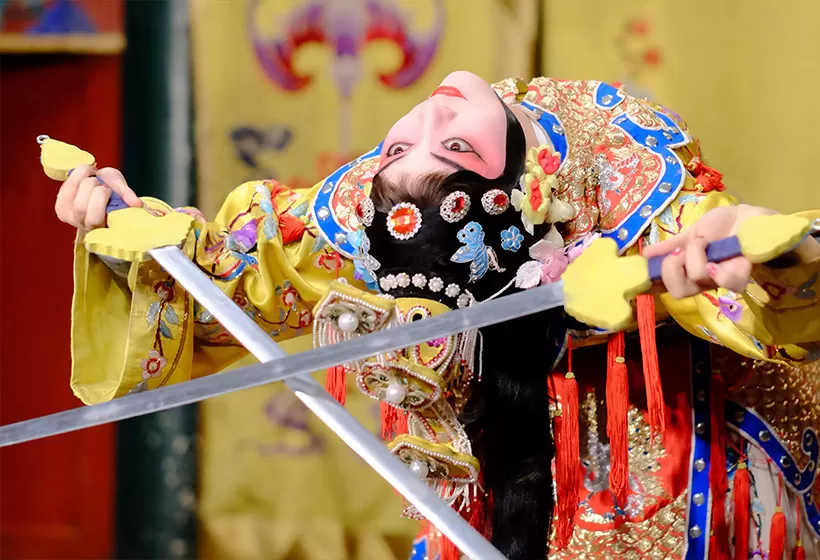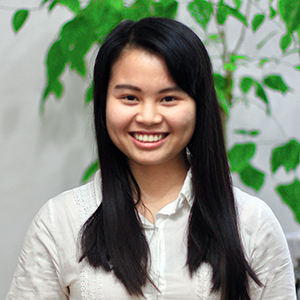Peking Opera
The History of Peking Opera
Peking opera, also referred to as Pingju or Jingxi in Chinese, is currently the most influential opera in China. It was born when the “Four Great Anhui Troupes” brought Anhui opera, or what is now called Huiju, in 1790 to Beijing, for the eightieth birthday of the Qianlong Emperor on September 25. It was originally staged for the court and was only made available to the public later. In 1828, several famous Hubei troupes arrived in Beijing and performed jointly with Anhui troupes. The combination gradually formed Peking opera's melodies. Peking opera is generally regarded as having fully formed by 1845. Although it is called Peking opera (Beijing theatre style), its origins are in southern Anhui and eastern Hubei, which share the same dialect of Xiajiang Mandarin (Lower Yangtze Mandarin). Peking opera's two main melodies, Xipi and Erhuang, derived from Han Opera after about 1750. The tune of Peking opera is extremely similar to that of Han opera, therefore Han opera is widely known as the Mother of Peking opera. Xipi literally means shadow play, referring to the puppet show that originated in Shaanxi province. Chinese puppet shows always involve singing. Much dialogue is also carried out in an archaic form of Mandarin Chinese, of which the Zhongyuan Mandarin dialects of Henan and Shaanxi are closest. This form of Mandarin is recorded in the book Zhongyuan Yinyun. It also absorbed music from other operas and local Zhili musical art forms. Some scholars believe that the Xipi musical form derived from the historic Qinqiang, while many conventions of staging, performance elements and aesthetic principles were retained from Kunqu, the form that preceded it as court art. Today, Peking opera is regarded as one of the cultural treasures of China and has also spread to other countries. It serves as a bridge through which traditional Chinese culture is introduced to other parts of the world.
Roles of Peking Opera
Over the past hundreds of years, the roles of Peking opera have been simplified to today’s Sheng, Dan, Jing and Chou, known as the four major roles in Peking opera.
The Sheng/生 is the main male role in Peking opera
The Dan/旦 refers to any female role in Peking opera
Jin/净
The Jing is a painted-face male role. Depending on the repertoire of the particular troupe, he will play either primary or secondary roles. This type of role will entail a forceful character, so Jing must have a strong voice and be able to exaggerate gestures.
Chou/丑
The Chou is a male clown role. The Chou usually plays secondary roles in a troupe. Chou has the meaning “ugly” in Chinese. This reflects the traditional belief that the clown’s combination of ugliness and laughter could drive away evil spirits. Chou roles can be divided into Wen Chou, civilian roles such as merchants and jailers, and Wu Chou, minor military roles.
The main color in facial makeup symbolizes the disposition and destiny of the character. As one of the essential elements of Peking opera, the masks can help the audience better understand the opera. To put it simply, red indicates devotion, bravery, and uprightness; black indicates either a rough and bold character or an impartial and selfless personality; blue represents staunchness, fierceness, and astuteness; a green face tells the audience that the character is impulsive and violent and depicts surly stubbornness, impetuosity and a total lack of self-restraint; yellow signifies fierceness, ambition, and cool-headedness; white suggests treacherousness, suspiciousness and craftiness; gold and silver colors are usually used for gods and spirits. The archetypes of masks were found in a primitive society where people used masks to perform religious rituals.
The masks have three features: a combination of beauty and ugliness, an indication of the disposition of the character, and a fixed pattern for drawing. For different roles, the masks can vary a great deal. The makeup for Sheng and Dan can be simpler, while the makeup for Jing and Chou can be rather heavy, and for Jing in particular, the pattern can be quite complex. The Peking opera masks often refer to the makeup of the Jing. For the Chou, they only need to powder their noses so as to form the image of a clown.
Skills in Painting Beijing Opera Masks
The three basic skills in painting Peking opera masks are basing powder, coloring the face and drawing lines. Initially, the function of the masks is to suggest the disposition of the character by exaggerating different parts of the face. With the help of the masks, it is easier for the audience to follow the plot of the opera. Later, the masks were further refined and became an art with Chinese characteristics.
Where Can We Watch an Opera in China?
Peking opera performances can be easily found in Beijing. One of the most famous Peking opera houses is Li Yuan. You can arrive at the opera house earlier and go the backstage to see how the performers get dressed and color their faces. If interested, you can learn Chinese and Peking opera in Beijing.
GREAT FAMILY CHINA TOUR
JULY 2024 We wanted to thank Grace at China Culture tour for organizing a great tour of China. We enjoyed our Beijing - Xian-Chengdu -Guilin -Yangshuo - Shanghai trip. Our local guides Bruce in Beijing, Susan in Xian, Jane in Chengdu, Mike in Guilin and Mary in Shanghai took care of us…read more details »
Teng Han L from SINGAPORE
Ready to Create a Unique Dream Travel?

